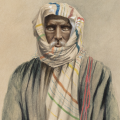-
Similar Content
-
By Abdira
Join the Somalia Discord Server!
DISCORD.GG #1 Discord for Somalia and the people of Eastern Africa | 879 members
-
By Abdiali
Somali Bantu and Somali Cushitic Situation | Medium
MEDIUM.COM Somali Bantu and Somali Cushitic Situation There is an interesting history of the Bantus and the Cushitic people in Somalia. For centuries, the Somali Bantu and the Somali Cushitic lived in Somaliland harmoniously. At the time, they lived in different regions. The Bantu occupied the southern part of Somalia, while their counterparts, the Cushitic group, occupied central and northern Somalia. The land was peaceful, as no group interfered with the affairs of the other. Still, each group defended their territory and could even help one another in times of need. In their subgroups, they governed themselves for many generations.
-
By Come Learn Somali
"Waan haraadanahay = I am thirsty"
"Waan qoslayaa = I am laughing"
"Waan Fakarayaa = I am thinking"
"Waan fiirinaya = I am looking"
- http://learnsomali.com/basic/ereyo-maalmeed-everyday-words/#comment-854
I say it like the following respectively:
"Waan omanahay"
"Waan qosloya"
"Waan f iikiroya"
"Waan f iirinoya"
Edits:
I never heard of "haraad".
I think the site has issues with lowercase double "i" s together. Thus I put a space so that it shows clearly.
-
By Come Learn Somali
I'm trying to better understand the Somali Dialects, who can help me?
First, I'm unsure about if these are all the same, or how they are related: Xamar, Mogadishu, and Banadiri. Likewise, Koonfur, and Banadiri dialect(s).
Moving on, I heard that Northern Somali dominates the media: music industry, news, etc., and maybe even the education system as in it's a dialect chosen for teaching. While Southern Somali is the most commonly spoken of all the dialects, and the two dialects (Northern, and Southern) are the most common of all the dialects. Do you think that is the case?
Feel free to share any other relevant insights.
I came across this photo long ago. Though I think I also came across another link that said it's wrong:
Somali languages - Wikiwand
WWW.WIKIWAND.COM The Somali languages form a group that are part of the Afro-Asiatic language family. They are spoken as a mother... Thank you for your help in advance. My internet is having issues, so I might be unable to respond for a while.






